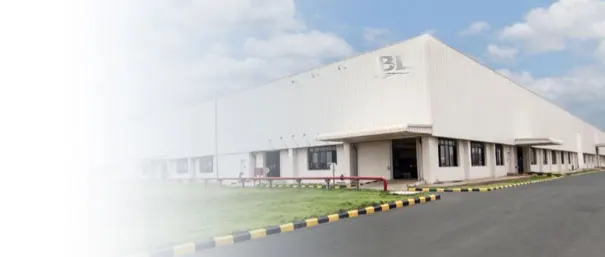ASTM 904L Stainless Steel: High-Alloy Austenitic Grade for Severe Corrosive Environments
ASTM 904L (UNS N08904) is a super-austenitic stainless steel with a low carbon content and high molybdenum addition (4-5%), designed for exceptional resistance to pitting, crevice corrosion, and stress corrosion cracking in aggressive chemical environments. Originally developed for sulfuric acid handling, this grade outperforms conventional 316L in chloride-rich media while maintaining excellent weldability and formability. This article explores its metallurgical composition, mechanical properties, fabrication techniques, and specialized applications across chemical processing, marine, and pharmaceutical industries.
1. Chemical Composition (ASTM A240/A480 Standard)
| Element | Content Range | Function |
|---|---|---|
| Carbon (C) | ≤ 0.020% | Ultra-low carbon prevents intergranular corrosion and sensitization during welding |
| Chromium (Cr) | 19.00 – 23.00% | Forms protective Cr₂O₃ passive layer; enhances oxidation resistance |
| Nickel (Ni) | 23.00 – 28.00% | Stabilizes austenitic structure; improves resistance to reducing acids (e.g., sulfuric acid) |
| Molybdenum (Mo) | 4.00 – 5.00% | Significantly enhances pitting resistance equivalent (PREN ≥ 35) |
| Copper (Cu) | 1.00 – 2.00% | Improves resistance to sulfuric acid and phosphoric acid corrosion |
| Manganese (Mn) | ≤ 2.00% | Assists in stabilizing austenite; minor deoxidation role |
| Silicon (Si) | ≤ 1.00% | Enhances resistance to oxidizing acids (e.g., nitric acid) |
| Phosphorus (P) | ≤ 0.030% | Controlled impurity to maintain corrosion resistance |
| Sulfur (S) | ≤ 0.015% | Minimized to prevent hot cracking and reduce inclusion formation |
2. Mechanical Properties (Annealed Condition)
- Tensile Strength (σb): ≥ 490 MPa (71 ksi) per ASTM A240
- Yield Strength (σ0.2): ≥ 220 MPa (32 ksi) with 40% minimum elongation
- Elongation (δ): ≥ 35% (excellent ductility for deep drawing and forming)
- Hardness (HB): ≤ 220 (Brinell) in solution-annealed state
- Impact Toughness: ≥ 100 J at -196°C (retains toughness in cryogenic applications)
- Density: 8.0 g/cm³ (slightly lower than carbon steel due to high Ni content)
3. Manufacturing & Fabrication Process
- Melting Practice: Vacuum oxygen decarburization (VOD) or argon oxygen decarburization (AOD) to achieve ultra-low carbon and nitrogen control, followed by electroslag remelting (ESR) for critical applications.
- Hot Working: Hot rolling at 1150-1250°C with rapid water quenching to prevent sigma phase precipitation; avoid working below 950°C to prevent cracking.
- Cold Working: Readily cold-formable with intermediate annealing at 1100-1150°C for heavy reductions; springback is higher than 304/316 due to higher nickel content.
- Heat Treatment: Solution annealing at 1090-1175°C followed by water quenching to dissolve intermetallic phases (e.g., chi, sigma) and restore corrosion resistance.
- Machining: Requires rigid setups and sharp tools (carbide or ceramic) due to work hardening; use sulfurized or chlorinated cutting oils for optimal surface finish.
- Welding: Use AWS ER385 or ERNiCrMo-3 filler metals; preheat not required for thin sections (<6mm), but post-weld annealing recommended for thick sections to restore corrosion resistance.
4. Corrosion Resistance Performance
| Corrosive Medium | Concentration/Temp | Performance | Comparison to 316L |
|---|---|---|---|
| Sulfuric Acid (H₂SO₄) | Up to 98% at 80°C | Excellent resistance in all concentrations | Superior (316L fails above 10% at elevated temps) |
| Phosphoric Acid (H₃PO₄) | Up to 85% at 100°C | Resistant with minimal corrosion rates | Superior (316L limited to <60°C in conc. acid) |
| Hydrochloric Acid (HCl) | Dilute (<5%) at 25°C | Moderate resistance; avoid aerated solutions | Comparable (both grades perform poorly in conc. HCl) |
| Seawater (Chloride) | Ambient to 60°C | PREN ≥35 prevents pitting/crevice corrosion | Superior (316L PREN ~25-30) |
| Acetic Acid (CH₃COOH) | Glacial at 120°C | Excellent resistance to pure and contaminated acid | Superior (316L suffers from acetic acid vapor corrosion) |
5. Key Application Industries
Chemical Processing
Sulfuric acid plants (absorbers, coolers, piping), phosphoric acid production (evaporators, reactors), and acetic acid distillation columns where 316L fails. Compliant with NACE MR0175 for sour gas environments.
Marine & Offshore
Seawater desalination plants (flash chambers, brine heaters), offshore platform piping, and subsea equipment where chloride-induced stress corrosion cracking is a risk. Certified for DNV/GL marine applications.
Pharmaceutical & Biotech
High-purity process vessels, fermentation tanks, and clean-in-place (CIP) systems for API manufacturing. Meets ASME BPE SF1/SF4 surface finish requirements and USP Class VI certification.
Pulp & Paper
Bleach plant equipment (chlorine dioxide towers, washers), black liquor recovery boilers, and digesters resistant to sulfur compounds and organic acids at elevated temperatures.
Oil & Gas
Downhole tubing, wellhead components, and refinery equipment for H₂S/CO₂-rich environments (sweet/sour service). Approved for ISO 15156-3 compliance in oilfield applications.
Flue Gas Desulfurization (FGD)
Scrubber systems, absorber towers, and ductwork in coal-fired power plants where sulfuric acid condensates and chloride ions accelerate corrosion of lesser grades.
6. Comparison with Competing Grades
| Grade | Key Alloying Elements | PREN Value | Primary Advantage | Cost Relative to 904L |
|---|---|---|---|---|
| ASTM 904L | 25% Ni, 4.5% Mo, 1.5% Cu | 35-40 | Best balance of sulfuric/phosphoric acid resistance and chloride pitting resistance | 1.0x (Baseline) |
| 254 SMO (UNS S31254) | 20% Ni, 6% Mo, 0.2% N | 43-48 | Higher PREN for seawater and bleach plant applications | 1.3x |
| AL-6XN (UNS N08367) | 24% Ni, 6.3% Mo, 0.2% N | 46-50 | Superior to 904L in chloride crevice corrosion (e.g., offshore splash zones) | 1.4x |
| 316L (UNS S31603) | 12% Ni, 2.5% Mo | 25-30 | Lower cost for mild corrosive environments (e.g., food processing) | 0.6x |
| Alloy 20 (UNS N08020) | 35% Ni, 2.5% Mo, 3% Cu | 32-36 | Better for mixed acid environments (H₂SO₄ + HCl) but poorer chloride resistance | 1.1x |
7. Selection Guidelines & Limitations
- When to Specify 904L: For sulfuric acid concentrations >10% at temperatures above 60°C, or chloride environments where 316L exhibits pitting (e.g., seawater at >30°C). Ideal for pharmaceutical processes requiring USP Class VI compliance.
- Welding Considerations: Use low-heat input processes (TIG preferred) and ER385 filler to avoid hot cracking. Post-weld pickling (HNO₃/HF mixture) and passivation are mandatory for critical applications.
- Thermal Stability: Avoid prolonged exposure to 600-900°C to prevent sigma phase formation, which reduces toughness and corrosion resistance. Not recommended for structural applications above 400°C.
- Cost Justification: While 2-3x the cost of 316L, 904L reduces lifecycle costs in aggressive environments by eliminating downtime for replacements. Conduct total cost of ownership (TCO) analysis for high-corrosion applications.
- Surface Finish: For pharmaceutical/food contact, specify electropolished surfaces (Ra < 0.5 µm) to minimize bacterial adhesion and improve cleanability per ASME BPE standards.
- Alternative Grades: For higher temperatures (>100°C) in sulfuric acid, consider Alloy 20; for seawater applications with higher velocities, 254 SMO or AL-6XN may be more suitable.
8. Request a Technical Quote for ASTM 904L
Need customized ASTM 904L stainless steel products (plates, sheets, coils, pipes, or fittings) for your corrosive environment? Our metallurgists provide tailored material recommendations and competitive pricing for bulk orders. Submit your specifications (dimensions, surface finish, quantity) for a detailed quotation.


